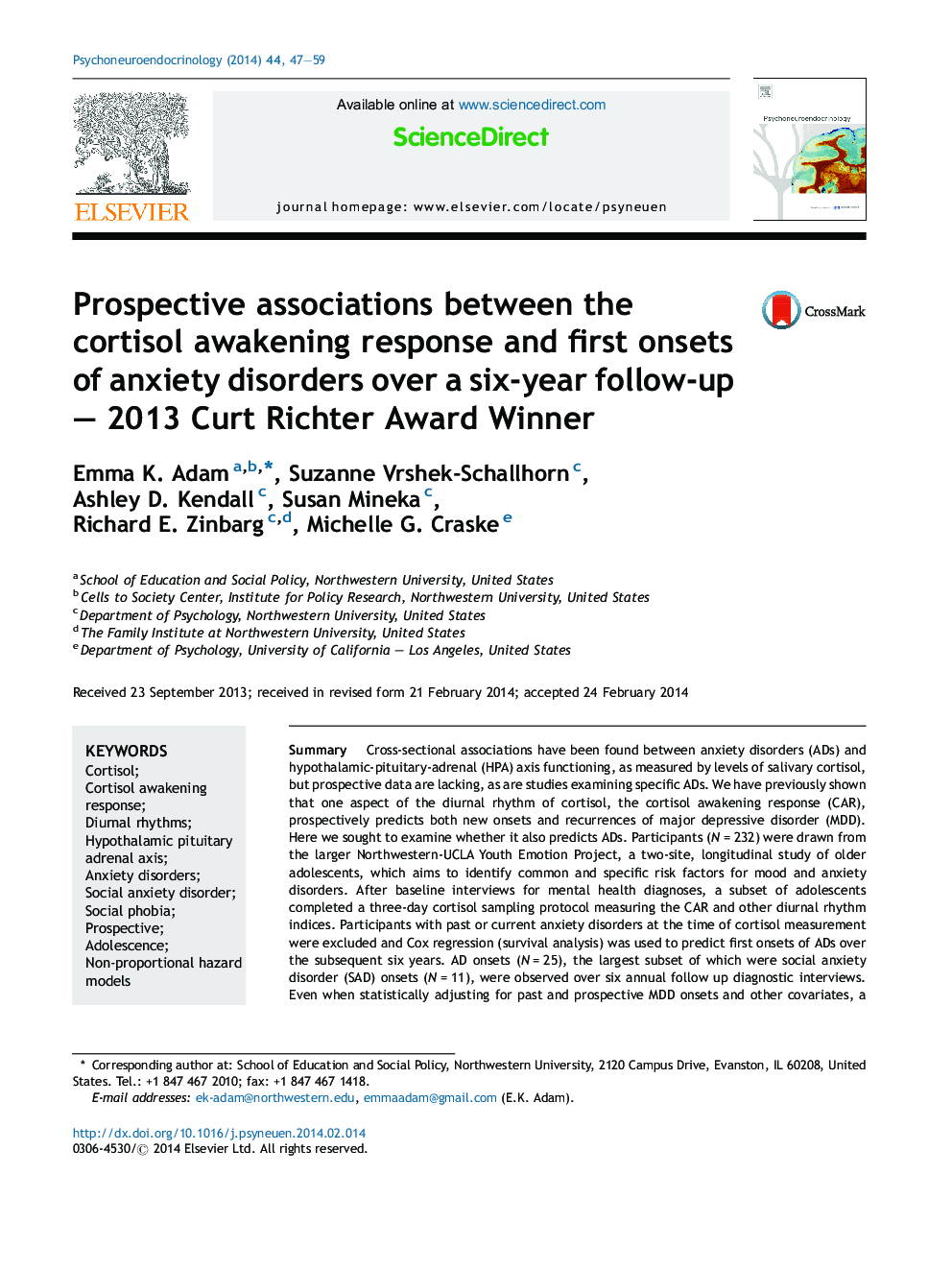| کد مقاله | کد نشریه | سال انتشار | مقاله انگلیسی | نسخه تمام متن |
|---|---|---|---|---|
| 335672 | 547012 | 2014 | 13 صفحه PDF | دانلود رایگان |

SummaryCross-sectional associations have been found between anxiety disorders (ADs) and hypothalamic-pituitary-adrenal (HPA) axis functioning, as measured by levels of salivary cortisol, but prospective data are lacking, as are studies examining specific ADs. We have previously shown that one aspect of the diurnal rhythm of cortisol, the cortisol awakening response (CAR), prospectively predicts both new onsets and recurrences of major depressive disorder (MDD). Here we sought to examine whether it also predicts ADs. Participants (N = 232) were drawn from the larger Northwestern-UCLA Youth Emotion Project, a two-site, longitudinal study of older adolescents, which aims to identify common and specific risk factors for mood and anxiety disorders. After baseline interviews for mental health diagnoses, a subset of adolescents completed a three-day cortisol sampling protocol measuring the CAR and other diurnal rhythm indices. Participants with past or current anxiety disorders at the time of cortisol measurement were excluded and Cox regression (survival analysis) was used to predict first onsets of ADs over the subsequent six years. AD onsets (N = 25), the largest subset of which were social anxiety disorder (SAD) onsets (N = 11), were observed over six annual follow up diagnostic interviews. Even when statistically adjusting for past and prospective MDD onsets and other covariates, a higher CAR significantly predicted increased first onsets of ADs (HR = 2.20, p < .05). A higher CAR was also a strong and significant predictor of the subset of SAD onsets (HR = 5.37, p < .005). Implications for the etiology of ADs, with a focus on SAD, are discussed.
Journal: Psychoneuroendocrinology - Volume 44, June 2014, Pages 47–59